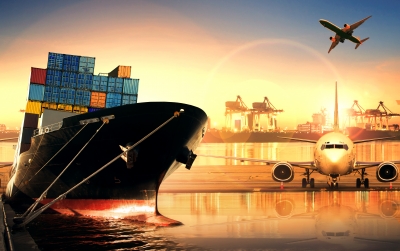-
The Bureau of Customs is eyeing the transition of Super Green Lane members to the Authorized Economic Operator program
-
The bureau has drafted an executive order that will automatically grant Super Green Lane members Authorized Economic Operator Level 1 status
-
Interim AEO Office head and Export Coordination Division chief Atty. Jenny Diokno said the draft EO is still subject to legal scrubbing but they are hoping to get it signed this year
-
BOC is also working on expanding AEO coverage to cargo transport service providers such as freight forwarders and customs brokers
The Bureau of Customs (BOC) is eyeing the transition of Super Green Lane (SGL) members to the Authorized Economic Operator (AEO) Program.
Under a draft executive order (EO), SGL members will automatically gain AEO Level 1 status, Interim AEO Office head and Export Coordination Division chief Atty. Jenny Diokno told PortCalls in a recent interview at an industry event.
Diokno said the draft EO is still subject to legal scrubbing but they are hoping to get it signed within the year.
Established under EO No. 230 series of 2000, SGL is a special facility whose members include multinational companies and top corporations that are accorded the privilege of advance processing and clearance of shipments for being considered low risk.
On the other hand, the AEO Program represents a customs-to-business partnership that seeks to enhance international supply chain security and facilitate movement of legitimate goods. Implementation of the AEO program in the Philippines became possible in 2016 with the passage of Republic Act No. 10863, otherwise known as the Customs Modernization and Tariff Act.
Companies accredited under the program will be recognized as trusted allies by the BOC and will be entitled to various benefits depending on their accreditation level.
BOC earlier said its SGL and AEO Program will initially co-exist, but the latter will eventually replace the former once all SGL members have migrated to AEO.
During the industry event’s panel discussion, Diokno noted that the AEO Program is a trade facilitation program similar to the SGL, but that the former has worldwide recognition.
A component of the AEO Program is the mutual recognition agreement (MRA), which refers to a formal document between two or more customs administrations outlining the circumstances and conditions for recognizing and accepting the AEO programs of the signing parties. The MRA allows AEO members in participating countries expedited clearance for their exports.
Currently, the Philippines already has an MRA with China and the Association of Southeast Asian Nations, and is also working on an MRA with Hong Kong. Diokno earlier said they are also hoping to sign MRAs with Japan and South Korea.
READ: PH fully implements ASEAN AEO mutual recognition agreement
Aside from transitioning SGL members to the AEO Program, Diokno said they are also working on expanding the program’s coverage to also include service providers such as freight forwarders and customs brokers. Currently, BOC’s AEO Program only covers importers and exporters.
She said they will be conducting focused group discussions in preparation for the drafting of the customs administrative order that would cover the benefits of freight forwarders, customs brokers, and other actions in the supply chain. A stakeholder consultation session was conducted on April 30.
Five companies are accredited under BOC’s AEO Program as of February: Toyota Motors Philippines Corp., Panasonic Manufacturing Corp., and Coca-Cola Europacific Aboitiz Philippines, Inc. (formerly Coca-Cola Beverages Philippines, Inc.)—all already upgraded to Level 2 accreditation—and Sony Philippines, Inc. and Brother Industries (Phils.), Inc. are currently under Level 1.
Benefits of a Level 1 member include exemption from renewing accreditation, self-assessment, supplementary goods declaration, and a dedicated help desk.
For Level 2 members, benefits include those for Level 1 plus a dedicated processing lane, advance clearance process, periodic lodgment, one-time exemption certificate, and expedited customs clearance for exports.
A Level 3 member will have extended additional benefits.
Once granted, accreditation under the AEO Program will last until suspended, revoked, or cancelled through voluntary withdrawal from the program. AEO members are, however, still subject to post-clearance audits to ensure compliance. – Roumina Pablo









